Table of Contents
Come join us now, and enjoy playing your beloved music and browse through great scores of every level and styles!
Can’t find the songbook you’re looking for? Please, email us at: sheetmusiclibrarypdf@gmail.com We’d like to help you!
Sorabji: In the Hothouse (from Two Piano Pieces) sheet music, Noten, partitura, spartiti 楽譜

Best Sheet Music download from our Library.

Please, subscribe to our Library.
If you are already a subscriber, please, check our NEW SCORES’ page every month for new sheet music. THANK YOU!
Browse in the Library:
Or browse in the categories menus & download the Library Catalog PDF:
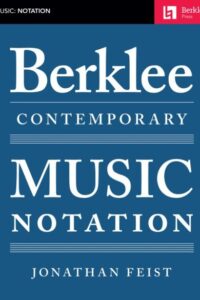
Who was Sorabji?
Kaikhosru Shapurji Sorabji: The Hermit of Modernist Maximalism
In the often-crowded pantheon of 20th-century composers, Kaikhosru Shapurji Sorabji (1892-1988) occupies a unique and enigmatic niche. A composer of staggering ambition, labyrinthine complexity, and self-imposed isolation, Sorabji crafted some of the most monumental, technically demanding, and stylistically idiosyncratic music ever conceived. His work, largely ignored during his lifetime and still challenging audiences today, represents a singular path through modernism – one defined by maximalism, intricate ornamentation, transcendental virtuosity, and a fierce, almost hermetic, independence.

Biography: A Self-Forged Identity
- Birth & Heritage: Born Leon Dudley Sorabji on August 14, 1892, in Chingford, Essex, England. His father was a Parsi engineer from India (thus the Persian-derived name Sorabji), and his mother was English-Spanish. This mixed heritage profoundly shaped his sense of identity, though he felt alienated from both cultures.
- The Name: Around 1914, he legally changed his name to Kaikhosru Shapurji Sorabji. “Kaikhosru” and “Shapurji” were Persian names chosen for their resonance and connection to ancient Persian history and Zoroastrianism, reflecting his deliberate construction of a unique persona.
- Musical Formation: Largely self-taught. He received some piano lessons in his youth but had no formal composition training. His musical education came through voracious listening, score study (especially Bach, Liszt, Busoni, Debussy, Ravel, Scriabin, Szymanowski, Medtner), and wide reading in literature, philosophy, and the occult.
- Early Career & Criticism: Worked as a music critic (under the pseudonym “S. Godfrey”) for outlets like The New Age and The New English Weekly from the 1910s to the 1930s. His critiques were famously acerbic, insightful, and often scathing, particularly targeting English musical provincialism and composers he deemed mediocre (which was most of them).
- The Recluse: Deeply disillusioned by the musical establishment and critical reception to his early performances (which were rare and often controversial), Sorabji gradually withdrew from public musical life starting in the late 1930s. After his mother’s death in 1940, he retreated almost completely to his secluded home “The Eye” in Corfe Castle, Dorset, where he lived with his companion, Reginald Norman Best, until his death. He forbade performances of his music for decades.
- The Ban Lifted: In 1976, pressured by a growing underground interest spearheaded by pianists like Yonty Solomon and Alistair Hinton (who later became his literary executor), Sorabji reluctantly lifted the ban on performances, provided he approved the performer.
- Death: Sorabji died on October 15, 1988, in Winfrith Newburgh, Dorset, leaving behind a colossal legacy of unpublished manuscripts.
Works: Monuments of Sound

Sorabji’s output is vast and overwhelmingly dominated by solo piano music, though he also composed orchestral works, chamber music, organ symphonies, and songs. His works are renowned for their extreme length, density, and technical difficulty, pushing the boundaries of playability.
- Key Masterpieces:
- Opus Clavicembalisticum (1930): His most famous (or infamous) work. A colossal 4+ hour piano epic in 12 movements (including fugues, passacaglias, toccatas, cadenzas), often considered one of the most challenging solo piano works ever written. A summit of contrapuntal complexity and virtuosic display.
- Symphonic Variations for Piano (1935-37): Another monumental work, exploring vast variation forms over an extended duration.
- Sequentia Cyclica super “Dies iræ” ex Missa pro Defunctis (1948-49): A massive cycle of 27 variations on the “Dies Irae” chant, demonstrating his intricate contrapuntal and transformative skills.
- 100 Transcendental Studies (1940-44): True to their name, these studies explore extreme technical and expressive demands far beyond those of Liszt or Chopin.
- Symphonies for Solo Piano: Several exist, including his Symphony No. 2 (“Jāmī”), blending orchestral textures and scope onto the piano.
- Gulistān – Nocturne for Piano (1940): A prime example of his lush, perfumed, and incredibly intricate “Persian”-inspired style.
- Concerti: He wrote several for solo piano and orchestra (e.g., Concerto per suonare da me solo e senza orchestra, per divertirsi), which are symphonic in scale and require superhuman virtuosity.
- Symphonies for Organ: Vast, complex works exploring the sonic possibilities of the instrument.
Analysis of Style: A Universe of Complexity
Sorabji’s style is instantly recognizable yet difficult to categorize. It synthesizes diverse elements into a unique and overwhelming whole:
- Maximalism: This is the defining characteristic. Sorabji embraced extremes:
- Length: Works lasting several hours are common.
- Density: Highly polyphonic textures, often with multiple independent melodic lines woven together in complex counterpoint (influenced by Bach, Busoni).
- Virtuosity: Demands transcendental technique – cascades of notes, complex polyrhythms, wide leaps, immense power, and extreme delicacy. He wrote as if the pianist had four hands.
- Ornamentation: Baroque-like ornamentation (trills, mordents, turns, grace notes) is ubiquitous, often layered and integral to the texture, creating shimmering, kaleidoscopic surfaces (influenced by Scriabin, Szymanowski, Middle Eastern/Persian music).
- Dynamic Range: From barely audible whispers to thunderous, percussive climaxes.
- Harmony: A complex fusion:
- Rooted in late-Romantic chromaticism (Scriabin, Szymanowski, early Schoenberg).
- Freely employed dissonance, clusters, and intricate chord structures.
- Often retained a sense of tonal centers or polarity, even amidst dense chromaticism (unlike strict atonality).
- Incorporated modal inflections, sometimes evoking Persian or Spanish flavors.
- Rhythm: Highly complex and fluid:
- Frequent use of polyrhythms (multiple simultaneous rhythms), cross-rhythms, and nested tuplets (triplets within quintuplets, etc.).
- Tempo often fluctuates wildly, requiring immense control.
- A sense of improvisatory freedom within highly structured forms.
- Form: Often large-scale, complex, and idiosyncratic:
- Favored variations (passacaglias, chaconnes), fugues, toccatas, and intricate multi-movement structures (like the Opus Clavicembalisticum).
- Forms were often expansive and cumulative, building through layered repetition and intensification rather than traditional development.
- Architecture was paramount, even in the densest textures.
- Influences (Assimilated, Not Imitated):
- Ferruccio Busoni: The most profound influence. Busoni’s ideas of “Young Classicism,” the transcendental potential of the piano, the fusion of Bachian counterpoint with modern harmony, and the concept of “Junge Klassizität” resonated deeply. Sorabji dedicated his Opus Clavicembalisticum to Busoni’s memory.
- Franz Liszt: Virtuosity, thematic transformation, large-scale forms, and the symphonic poem concept translated to piano.
- J.S. Bach: Contrapuntal mastery, structural rigor, and the use of forms like fugue and passacaglia.
- Alexander Scriabin: Mysticism, harmonic language, dense textures, and ecstatic climaxes.
- Karol Szymanowski: Sensuous harmony, intricate ornamentation (especially in the “Persian” inspired works like Métopes and Masques), and voluptuous textures.
- Debussy & Ravel: Color, texture, exoticism, and pianistic refinement.
- Mediterranean & Persian Cultures: While not authentically recreating these styles, he evoked their essence through ornamentation, melodic turns, and titles (Gulistān, Jāmī), reflecting his fascination with his Persian heritage and the wider Orient.
- Aesthetic: Sorabji’s music aimed for:
- Transcendence: Pushing beyond perceived limits of instrument, performer, and listener.
- Luxuriance & Opulence: A rich, sensual, almost decadent sound world.
- Intellectual Rigor: Underlying the sensual surface was meticulous structural planning.
- Individualism: A complete rejection of prevailing trends (serialism, neoclassicism, minimalism) in favor of his own uncompromising vision.
Legacy: From Obscurity to Cult Status
Sorabji’s legacy is complex and evolving:
- Decades of Neglect: His self-imposed exile and performance ban meant his music was virtually unknown outside a tiny circle for nearly 40 years. Manuscripts were inaccessible, unplayable, and unpublished.
- The Pioneers (1970s-): The lifting of the ban sparked interest. Pianists like Yonty Solomon, Michael Habermann, Geoffrey Douglas Madge (who made the first complete recording of Opus Clavicembalisticum in 1977), and later Marc-André Hamelin, Jonathan Powell, Fredrik Ullén, and Ronald Stevenson began the monumental task of learning, performing, and recording his works. This required immense dedication and technical prowess.
- Publication & Scholarship: The Sorabji Archive, established by Alistair Hinton (Sorabji’s literary executor), has been crucial in cataloging, editing, and facilitating the publication of scores (primarily by Dover Publications and The Sorabji Music Archive). Scholarly work is gradually increasing.
- Recordings Renaissance: The CD era and digital distribution (YouTube, streaming) have been transformative. Dedicated labels (Altarus, BIS, Toccata Classics, Piano Classics) have released numerous recordings, making this once-inaccessible music available globally. Complete cycles of the 100 Studies and other major works are underway.
- The Cult & The Challenge: Sorabji remains a “composer’s composer” and a cult figure. His music is not mainstream concert fare due to its extreme demands and duration. However, it commands deep respect and fascination among pianists, composers, and listeners drawn to its unique sound world and uncompromising vision. He is seen as the ultimate iconoclast, forging a path utterly independent of 20th-century musical fashions.
- Influence: His direct influence on other composers is hard to pinpoint due to his obscurity, but he stands as a powerful symbol of uncompromising artistic integrity and the exploration of extreme complexity and virtuosity. Composers interested in maximalism, intricate counterpoint, or pushing pianistic limits inevitably encounter his shadow.
- Copyright Controversy: The complex copyright status of his works (involving the Sorabji Archive and publishers) has sometimes been a point of friction within the community of performers and scholars seeking access.
Sorabji: The Solitary Giant
Kaikhosru Shapurji Sorabji was a true original. He inhabited a musical universe entirely of his own making, synthesizing diverse influences into a style characterized by unparalleled complexity, sensuous opulence, and transcendental ambition. His deliberate withdrawal from the world ensured decades of obscurity, but the dedication of pioneering performers and the power of recording technology have brought his extraordinary soundscapes to light. While his music remains challenging and demanding, it offers unparalleled rewards: a journey into a world of labyrinthine beauty, overwhelming power, and intellectual fascination. Sorabji stands as a testament to the power of an utterly individual artistic vision, uncompromising in its scope and ambition, a solitary giant whose monumental creations continue to challenge and inspire. He redefined the possible for the piano and left a legacy that continues to unfold as more performers dare to scale his musical Himalayas.
“In the Hothouse” is one of Sorabji’s most evocative and frequently performed works, serving as a perfect entry point into his dense, sensuous sound world. Here’s a detailed look at this fascinating piece:
Context: Two Piano Pieces (1918)
- Composed: 1918 (early in Sorabji’s career, age 26).
- Publication: First published in 1920, making it one of the earliest Sorabji works available in print.
- The Pair: “In the Hothouse” is paired with “Toccata” – a contrasting, hyper-virtuosic, and structurally complex piece showing his Busoni/Liszt influences. “In the Hothouse” offers the sensual, atmospheric counterpoint.
- Significance: Represents Sorabji’s early mastery of texture, harmony, and evocative atmosphere. It predates his gargantuan works but already displays his unique voice.
“In the Hothouse”: A Sensory Immersion
- Title & Imagery: The title instantly conjures an environment: humid, lush, teeming with exotic, overripe plant life, heavy perfumes, and stifling, enclosed heat. Sorabji translates this sensory overload into sound.
- Form & Structure: Relatively free and rhapsodic. It unfolds as a continuous, organic stream of consciousness rather than adhering to strict classical forms. Think of it as an elaborate, decadent arabesque.
- Style & Character:
- Extreme Sensuality: This is the defining feature. The music drips with lush, complex harmonies and suffocatingly rich textures.
- Harmony: Deeply chromatic, rooted in late Scriabin and early Szymanowski. Expect dense, constantly shifting chords: augmented harmonies, whole-tone inflections, unresolved dissonances creating tension, and sudden moments of surprising consonance like shafts of light piercing foliage. It avoids traditional tonality but gravitates around implied centers.
- Texture: Thick, layered, and constantly in motion. Tremolos, trills, rapid filigree (ornamental passages), and cascading arpeggios create a shimmering, humid haze. Melodies are often embedded within this dense undergrowth rather than standing clearly apart. The writing often requires the pianist to sustain multiple layers simultaneously.
- Rhythm: Fluid and flexible, often obscured by the sheer density of notes and ornamentation. Rubato (expressive tempo fluctuations) is essential. While less overtly complex polyrhythmically than his later works, the rhythmic flow feels organic and improvisatory.
- Dynamics & Articulation: Wide dynamic range, often shifting suddenly between extremes (e.g., thunderous climaxes collapsing into fragile whispers). Articulation varies from sharp staccatos to legatissimo passages that blur together. Pedaling is crucial for sustaining the harmonic haze and creating resonance.
- Ornamentation: Quintessential early Sorabji. Trills, mordents, turns, and grace notes are not mere decoration; they are the texture, creating constant flickering movement and contributing to the claustrophobic, teeming atmosphere. This foreshadows the intricate ornamentation dominating his mature style.
- Emotional Landscape: Evokes opulence, decadence, languor, mystery, stifling heat, hidden dangers, and overwhelming sensory stimulation. There’s a sense of beauty bordering on the grotesque due to its sheer intensity.
Influences Audible in “In the Hothouse”
- Scriabin (Primary): The harmonic language (mystic chords, unresolved dissonance, ecstatic climaxes), the sensual atmosphere, and the use of trills/tremolos are deeply indebted to Scriabin’s late sonatas and poems (e.g., Vers la flamme). Sorabji pushes Scriabin’s decadence further.
- Szymanowski: The opulent textures, perfumed harmonies, and “orientalist” exoticism (though abstracted here) strongly recall Szymanowski’s “Métopes” or “Masques,” which Sorabji admired deeply.
- Debussy: The focus on atmosphere, texture, and harmonic color (whole-tone scales, parallel chords) shows Debussy’s influence, though rendered with far greater density and intensity.
- Ravel: The virtuosic filigree and lush harmonies (think “Gaspard de la Nuit,” especially “Ondine” or “Le gibet”) are a touchstone, again amplified.
- Liszt: The rhapsodic freedom and dramatic gestures hint at Liszt, though filtered through a post-Scriabinesque lens.
Performance Challenges
- Texture & Balance: Maintaining clarity amidst the dense, rapidly shifting textures is paramount. The pianist must carefully voice chords and layers to prevent muddiness while sustaining the essential harmonic haze.
- Ornamentation as Texture: Executing the constant ornamentation smoothly and evenly, integrating it into the melodic and harmonic flow rather than treating it as mere decoration.
- Dynamic Control: Navigating the extreme dynamic contrasts and sudden shifts without sounding jarring. Creating a true pianissimo shimmer within complexity is incredibly difficult.
- Rubato & Phrasing: Applying expressive tempo fluctuations naturally while maintaining the overall structural coherence and forward momentum of the rhapsodic form.
- Pedaling: Using the pedal to create resonance and blend without causing harmonic blurring or loss of rhythmic definition. Requires exceptional sensitivity.
- Stamina & Focus: While shorter than his later works (typically 12-15 minutes), the piece demands intense concentration and physical control to sustain the atmosphere and navigate the technical intricacies.
Legacy & Significance of “In the Hothouse”
- Accessibility: It remains one of Sorabji’s most “accessible” works due to its evocative title, relatively shorter duration, and concentrated expression. It’s a frequent choice for pianists introducing audiences to Sorabji.
- Blueprint: It serves as a crucial blueprint for Sorabji’s mature style, showcasing his core preoccupations: sensuality, harmonic density, intricate ornamentation as texture, and atmospheric evocation, all present in embryonic form.
- Performance History: Despite Sorabji’s later ban, “In the Hothouse” (along with the Toccata) was one of the few pieces occasionally performed during his lifetime (e.g., by Sorabji himself and pianist Reginald Paul) and became a key work for the pioneering generation post-1976 (Yonty Solomon, Michael Habermann, Marc-André Hamelin, Jonathan Powell, Fredrik Ullén).
- Gateway Piece: It functions as a vital “gateway drug” into Sorabji’s world. Its success in conveying its intense atmosphere often encourages listeners to explore his more monumental, complex works.
- Standalone Masterpiece: Regardless of its role as an introduction, it stands as a perfectly formed and powerful piece of early modernist piano writing, a miniature tone poem of extraordinary evocative power.
“In the Hothouse” is a sun-drenched, overripe, and intoxicating immersion into Sorabji’s unique aesthetic. It captures the essence of his sensual maximalism in a concentrated dose, showcasing his debt to Scriabin and Szymanowski while asserting his own distinct voice. Its evocative power, technical brilliance, and relative brevity ensure its enduring place as one of his most beloved and frequently performed works, offering a compelling glimpse into the hothouse of Sorabji’s extraordinary musical imagination.
| Artist or Composer / Score name | Cover | List of Contents |
|---|---|---|
| Sara Bareilles Amidst The Chaos Piano Vocal Guitar | Sara Bareilles Amidst The Chaos Piano Vocal Guitar | |
| Sara Bareilles Kaleidoscope Heart Piano Vocal Guitar |
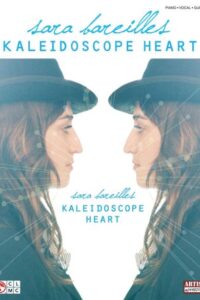 |
Sara Bareilles Kaleidoscope Heart Piano Vocal Guitar |
| Sara Bareilles Little Voice Piano Vocal Guitar |
 |
Sara Bareilles Little Voice Piano Vocal Guitar |
| Sara Bareilles Once Upon Another Time Piano Vocal Guitar |
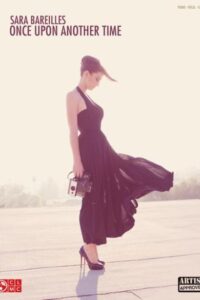 |
Sara Bareilles Once Upon Another Time Piano Vocal Guitar |
| Sara Bareilles The Blessed Unrest Piano Vocal Guitar |
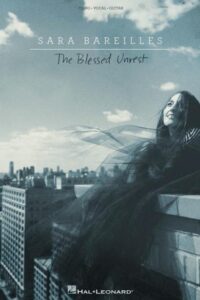 |
Sara Bareilles The Blessed Unrest Piano Vocal Guitar |
| Sara Bareilles Whats Inside Songs From Waitress Piano Vocal Guitar |
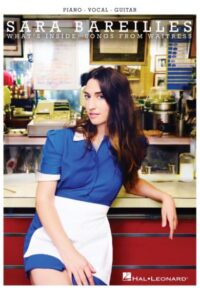 |
Sara Bareilles Whats Inside Songs From Waitress Piano Vocal Guitar |
| Sarabande (Musescore File).mscz | ||
| Sarah Brightman – Time to Say Goodbye (Sheet Music) |
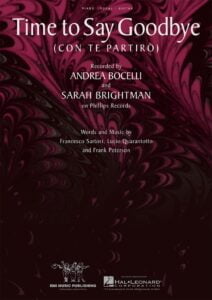 |
|
| Sarah Brightman NELLA FANTASIA | Sarah Brightman NELLA FANTASIA | |
| Sarah Mclachlan – Adia | ||
| Sarah Mclachlan – Angel | ||
| Sarah Mclachlan – Fallen | ||
| Sarah Mclachlan – I Will Remember You | ||
| Sarah Mclachlan – Last Dance | ||
| Sarah Mclachlan – Surfacing Piano Guitar Vocal |
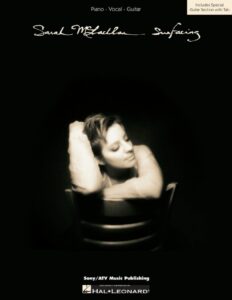 |
Sarah Mclachlan – Surfacing Piano Guitar Vocal |
| Sarah Mclachlan – When She Loved Me – Toy Story 2 | ||
| Sarah McLachlan Afterglow |
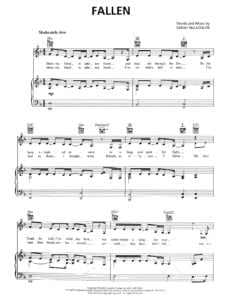 |
|
| Sarah Vaughan – Queen of Bebop – Elaine M. Hayes (Book) THe Musical Lives of Sarah Vaughan (Book) |
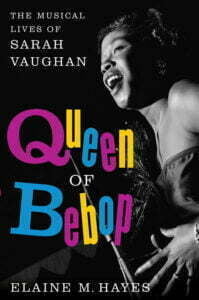 |
|
| Sarah Vaughan Original Keys For Singers Piano Vocal |
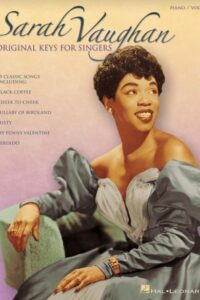 |
Sarah Vaughan Original Keys For Singers Piano Vocal |
| Sartori, Francesco – Time To Say Goodby (Con Té Partiró) |
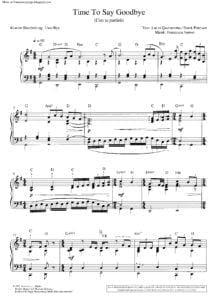 |
|
| Satellite (Lena Meyer-Landrut) | ||
| Satie – Pièces Froides Danses De Travers No. 1 (Musescore File).mscz | ||
| Satie – 1st Gymnopédie (Musescore File).mscz | ||
| Satie – Gnossienne No. 1 (Musescore File).mscz | ||
| SATIE – Gnossienne No. 1-6 | SATIE – Gnossienne No. 1-6 | |
| Satie – Je Te Veux (Musescore File).mscz | ||
| Satie – Je te veux (Sheet music for piano) | Satie – Je te veux (Sheet music for piano) | |
| Satie 6 Gnossiennes Mandozzi Piano seul |
 |
|
| Satie Erik Satie Music, Art And Literature By Caroline Potter (Book) |
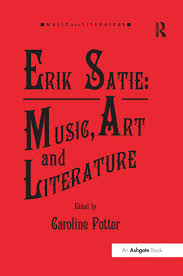 |
|
| Satie Gnossienne 1 Guitar |
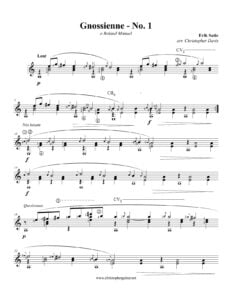 |
|
| Satie Gnossienne 5 |
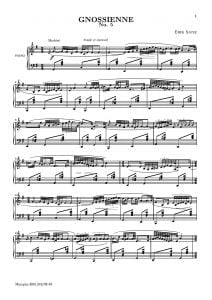 |
|
| Satie Gymnopedies And Gnossiennes Piano With Online Audio Of Performances Schirmer Performance Edit |
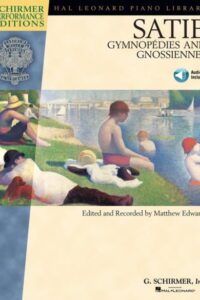 |
|
| Satie Gymnopedies Gnossiennes And Other Works For Piano |
 |
Satie Gymnopedies Gnossiennes And Other Works For Piano |
| Satie Selected Piano Works |
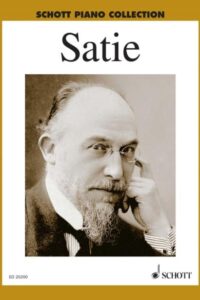 |
Satie Selected Piano Works |
| Satie, Erik 3 Nocturnes |
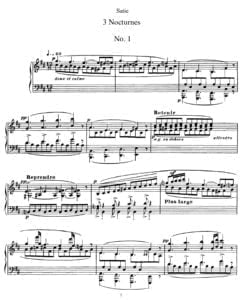 |
|
| Satie, Erik – Cinema – Complete Sheet Music (Full score) | ||
| Satie, Erik 3 Gymnopédies pour Piano | Satie-Erik-3-Gymnopédies-pour-Piano | |
| Satie, Erik Guitar Transcriptions By Francis Kleynjans |
 |
|
| Satin Doll (Duke Ellington & Billy Strayhorn) (Musescore File).mscz | ||
| Satoshi Takebe From Up On Poppy Hill Reminiscence |
 |
Satoshi Takebe From Up On Poppy Hill Reminiscence |
| SAU – Boig Per Tu |
 |
|
| SAU Boig per tu (original) | SAU Boig per tu (original) | |
| Savage Garden – I Knew I Loved You | ||
| Savage Garden – Truly Madly Deeply | ||
| Savage Garden – Two Beds And A Coffee Machine | ||
| Savatage – Bleed | ||
| Save Room Medley Resident Evil Piano Solo |
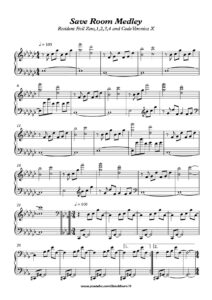 |
|
| Sax Plus Vol. 1 by Arturo Himmer with MP3 audio tracks play along |
 |
Sax Plus! Vol. 1 by Arturo Himmer (Contents List) |
| Sax Plus Vol. 2 by Arturo Himmer with MP3 audio tracks play along |
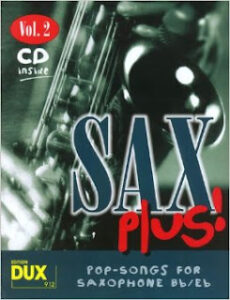 |
Sax Plus Vol. 2 by Arturo Himmer with MP3 audio tracks play along |
| Sax Plus Vol. 3 by Arturo Himmer with MP3 audio tracks play along |
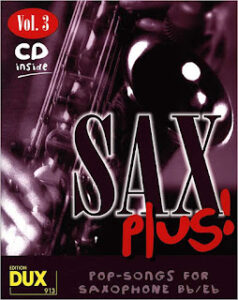 |
Sax Plus Vol. 3 by Arturo Himmer with MP3 audio tracks play along |
| Sax Plus Vol. 4 by Arturo Himmer with MP3 audio tracks play along |
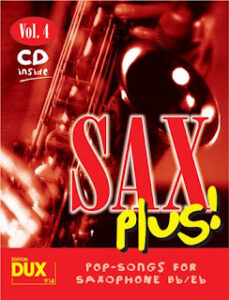 |
Sax Plus Vol. 4 by Arturo Himmer with MP3 audio tracks play along |
| Sax Plus Vol. 5 by Arturo Himmer with MP3 audio tracks play along |
 |
Sax Plus Vol. 5 by Arturo Himmer with MP3 audio tracks play along |
| Sax Plus Vol. 6 by Arturo Himmer with MP3 audio tracks play along |
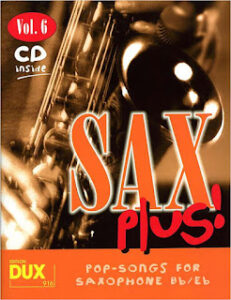 |
Sax Plus Vol. 6 by Arturo Himmer with MP3 audio tracks play along |
| Sax Plus Vol. 7 by Arturo Himmer with MP3 audio tracks play along |
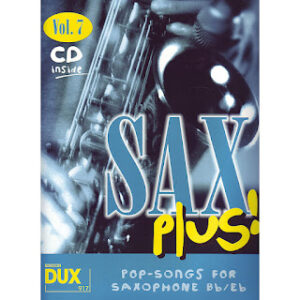 |
Sax Plus Vol. 7 by Arturo Himmer with MP3 audio tracks play along |
| Saxophone Training Daily Exercises For Beginners And Advanced Players |
 |
|
| Saxophone Voicing by Donald J Sinta |
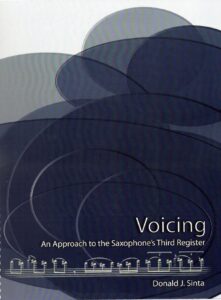 |
|
| Scale Skills Bykeith Snell Scales Arpeggios Chords Finger Exercises for Guitar |
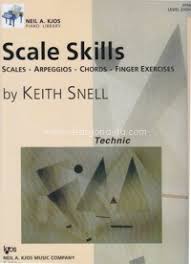 |
|
| Scales And Arpeggios Learn How To Play Piano or Keyboard By Martin Woodward |
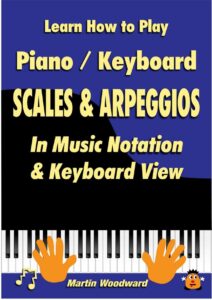 |
|
| Scales And Arpegios For Piano by Donald Gray (for exams of ABRSM, Trinity and The Gguildhall School of Music) |
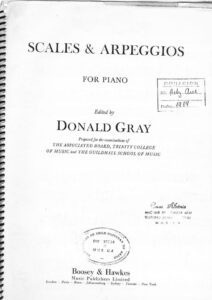 |
|
| Scales And Modes For The Jazz Pianist by Larry Agovino |
 |
|
| Scales Chords Arpeggios By James Bastien |
 |
Scales Chords Arpeggios By James Bastien |
| Scales For Jazz By Jeff Lewis |
 |
|
| Scales For Jazz Improvisation | Scales For Jazz Improvisation | |
| Scales Patterns And Improvs Book 1 Improvisations Five Finger Patterns I V7 I Chords And Arpeggios By Fred Kern, Barbara Kreader, Phillip Keveren and Mona Rejino |
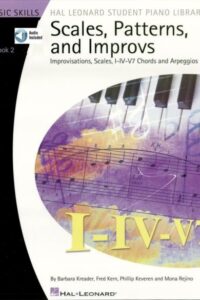 |
|
| Scales Patterns And Improvs Book 2 Improvisations Scales I Iv V7 Chords And Arpeggios By Fred Kern, Barbara Kreader, Phillip Keveren and Mona Rejino |
 |
|
| Scandinavian Piano Music, Album Of Forty One Pieces In Two Volumes |
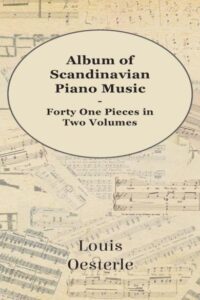 |
Scandinavian Piano Music, Album Of Forty One Pieces In Two Volumes |
| Scarborough Fair Canticle Simon And Garfunkel (Piano, Lyrics, Guitar Chords) |
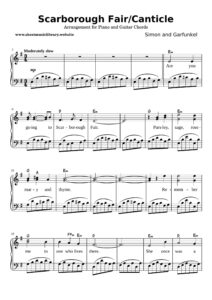 |
|
| Scarlatti, Domenico – Complete Sonatas for Piano |
 |
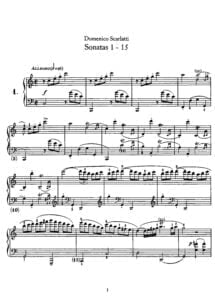 |
| Scat Omnibook for Vocalists and C Instruments Trancribed exactly from the original recordings |
 |
Scat Omnibook for Vocalists and C Instruments Trancribed exactly from the original recordings |
| Schafer Epitaph For Moonlight | Schafer Epitaph For Moonlight | |
| Schindler’s List – John Williams (Piano Solos) |
 |
Schindler’s List – John Williams |
| Schindler’s list (John Williams) Piano Solo Main Theme | ||
| Schindler’s List Theme EASY PIANO (Musescore file).mscz | Musescore File | |
| Schmitt – Preparatory Exercises, op 16 | ||
| Schnittke, Alfred – Two pieces for organ (music score) |
 |
|
| Schoenberg Sechs Kleine Klavierstücke Op 19 |
 |
|
| Schoenberg Drei Klavierstüke Op 11 (Three piano pieces) |
 |
|
| Schoenberg Ejercicios Preliminares De Contrapunto (Spanish-Español) | Book Theory | |
| Schoenberg Master Musicians Series (eBook) Biography |
 |
|
| Schoenberg’s Twelve-Tone Music by Jack Boss Symmetry and Musical Idea (Book) |
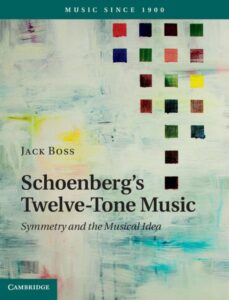 |
|
| Schönberg – I Dreamed A Dream (From Les Misérables) (Musescore File).mscz | ||
| Schönberg – I Dreamed A Dream (From Les Misérables) Piano Solo arr | Schönberg – I Dreamed A Dream (From Les Misérables) Piano Solo arr | |
| Schostakovich Piano Concerto No. 2 Solo Piano (Musescore File).mscz | ||
| Schubert Franz 30 Melodies Choisies – Collection Litolff | Schubert 30 melodies | |
| Schubert – 4 Impromptus Op 90 |
 |
|
| Schubert – 4 Impromptus Op 142 | Schubert – 4 Impromptus, Op 142 | |
| Schubert – 6 Moments Musicaux D780 | ||
| Schubert – Allegretto In C Minor D.915 (Musescore File).mscz | ||
| Schubert – Ave Maria (D 839) Piano Solo Arr. Ellens Gesang Iii D. 839 Op. 52 No. 6 (Musescore File).mscz | ||
| Schubert – Ave Maria (D 839) Piano Solo arr. Ellens Gesang III D. 839, Op. 52, No. 6 | Schubert – Ave Maria (D 839) Piano Solo arr. Ellens Gesang III D. 839, Op. 52, No. 6 | |
| Schubert – Ave Maria (Musescore File).mscz | ||
| Schubert – Ave Maria D.839 Easy Piano Solo arr. (sheet music, Noten, partitura, partition) |
 |
|
| Schubert – Ave Maria D.839 Piano Solo arr. (sheet music, Noten, partitura, partition).mscx | ||
| Schubert – Ave Maria D839 Solo_Piano_Arr |
 |
|
| Schubert – Ave Maria Easy Piano Solo arr. (sheet music, Noten, partitura, partition).mscz | ||
| Schubert – Piano Sonata in A D 664 | ||
| Schubert – Piano Trio Eb D.929 Andante (2h piano arr. by Ehrmann) |
 |
|
| Schubert – Piano Trio Eb D.929 Op. 100 (piano solo arr.) | ||
| Schubert – Schwanengesang 14 Lieder arr. for piano solo by A. Horn (incl. Ständchen) | Schbert Schwanengesang | |
| SCHUBERT – The Complete Piano Sonatas For Piano Solo |
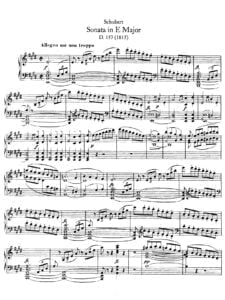 |
|
| Schubert – Winterreise Op. 89 (voice and piano) | Schubert Winterreise | |
| Schubert Allegretto C Minor |
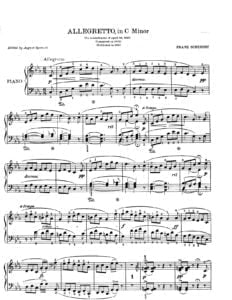 |
|
| Schubert D310 Sehnsucht (voice & piano) | ||
| Schubert D693 Der Fluss Voice & Piano |
 |
|
| Schubert Klavier Trio Op. 100 D. 929 2 Mov. Andante Easy Intermediate Piano Solo arr. | Schubert Klavier Trio Op. 100 D. 929 2 Mov. Andante Easy Intermediate Piano Solo arr. | |
| Schubert Klavier Trio Op. 100 D. 929 2 Mov. Andante Easy Intermediate Piano Solo arr..mxl | ||
| Schubert Lied der Mignon op. 62 no. 4 | ||
| Schubert Lieder Band II |
 |
|
| Schubert Lieder Tief Muellerin |
 |
|
| Schubert Piano Sonata No. 21 In B Major D 960 (Musescore file).mscz | Musescore File | |
| Schubert Piano Sonatas Vol 1 Henle Urtext |
 |
|
| Schubert Piano Sonatas Vol 2 Henle Urtext |
 |
|
| Schubert Piano Sonatas Vol 3 Henle Urtext Includes 3 Last Sonatas |
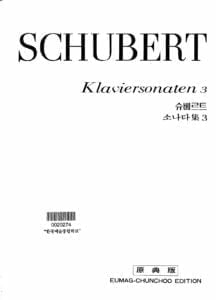 |
|
| Schubert Piano Sonatas Vol 4 Henle Urtext |
 |
|
| Schubert Piano Sonatas Vol 5 And Anhang Henle Urtext |
 |
|
| Schubert Serenade Standchen Arr. By Lizst |
 |
|
| Schubert Sonata in A major, D. 959 (Henle) |
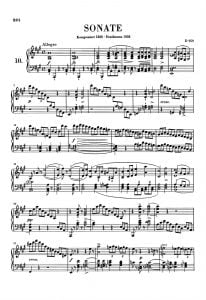 |
|
| Schubert Song Transcriptions For Solo Piano |
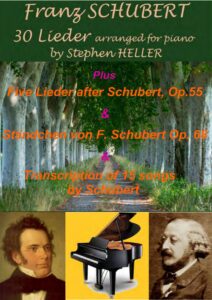 |
|
| Schubert Song Transcriptions For Solo Piano (Franz Liszt) |
 |
Schubert Song Transcriptions For Solo Piano (Franz Liszt) |
| Schubert Werke Breitkopf Serie 11 No 120 D 946 | ||
| Schubert-Liszt – Erlkönig (Schubert famous Lied Erlkönig (S. 558-4).mscz | ||
| Schulz – Scales and Chords | ||
| Schumann Piano Concerto Op. 54 Theme From 1st Mov. Piano Solo Reduction |
 |
|
| Schumann – Dichterliebe Op. 48 voice and piano | Schumann Dichterliebe Op. 48 | |
| Schumann – Kinderszenen No.10 Fast Zu Ernst.mscz | ||
| Schumann – Piano Concerto Op. 54 Theme from 1st Mov. Piano Solo reduction.mscz | ||
| Schumann – Traumerei | Schumann – Traumerei | |
| Schumann – Waldscenen Op 82 | ||
| Schumann Fantasy op12 n1 | ||
| Schumann For Guitar 30 Transcriptions |
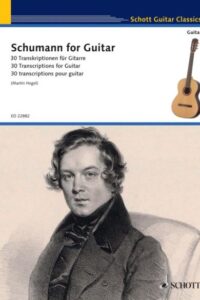 |
Schumann For Guitar 30 Transcriptions |
| Schumann Kinderscenen Op 15 Scenes from Chilhood | Schumann Kinderscenen, Op 15 | |
| Schumann op. 56 1 piano 4 hands | ||
| Schumann Piano concerto Intermezzo (arr. for piano solo) | ||
| Schumann, Clara (Wieck) Op.6 – Soireés Musicales | ||
| Schumann, Robert – Pieces For Piano Solo (Op.26 And Beyond) |
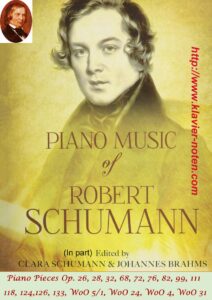 |
|
| Schwandt – Dream A Little Dream Of Me | Schwandt Dream-A-Little-Dream-Of-Me | |
| Schweitzer, Albert – J. S. bach volume 1 |
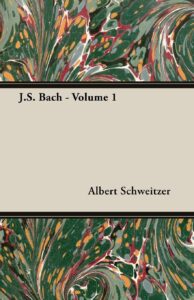 |
|
| Schweitzer, Albert – J. S. bach volume 2 |
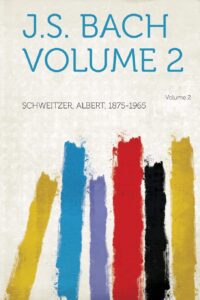 |
|
| Sciarrino, Salvatore – Perduto in una citta d’acqua per pianoforte |
 |
|
| Score A Film Music Documentary The Interviews (Feat. Hans Zimmer, Bear Mccreary, James Cameron, Brian Tyler And More) (Matt Schrader) Book |
 |
|
| Scorpions Anthology (Piano, guitar and voice) |
 |
Scorpions Anthology |
| Scorpions Guitar Songbook Best Of with Tablature |
 |
Scorpions Guitar Songbook Best Of |
| Scot Ranneys Jazz Piano Notebook Volume 2 Latinesque Jazz Piano Exercises Etudes And Tricks Of The Trade You Can Use Today |
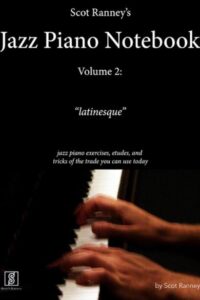 |
|
| Scott Alan – Always Sheet Music |
 |
|
| Scott D Davis Solo Piano |
 |
Scott D Davis Solo Piano |
| Scott English Richard Kerr – Mandy (piano sheet music) | Scott English Richard Kerr – Mandy (piano sheet music) | |
| Scott Hamilton Body And Soul Ballad Essentials | Scott Hamilton Body And Soul Ballad Essentials | |
| Scott Henderson Blues Guitar Collection with Tablature Recorded Guitar Versions |
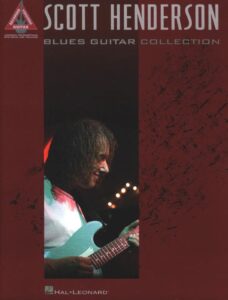 |
Blues Guitar Collection with Tablature by Scott Henderson |
| Scott Henderson Guitar Book Artist Transcriptions |
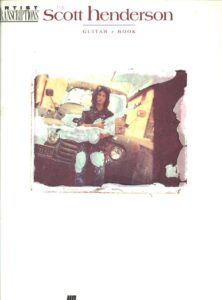 |
Scott Henderson Guitar Book |
| Scott Joplin Collected Piano Works RAGS, WALTZES, MARCHES |
 |
Scott Joplin Collected Piano Works RAGS, WALTZES, MARCHES |
